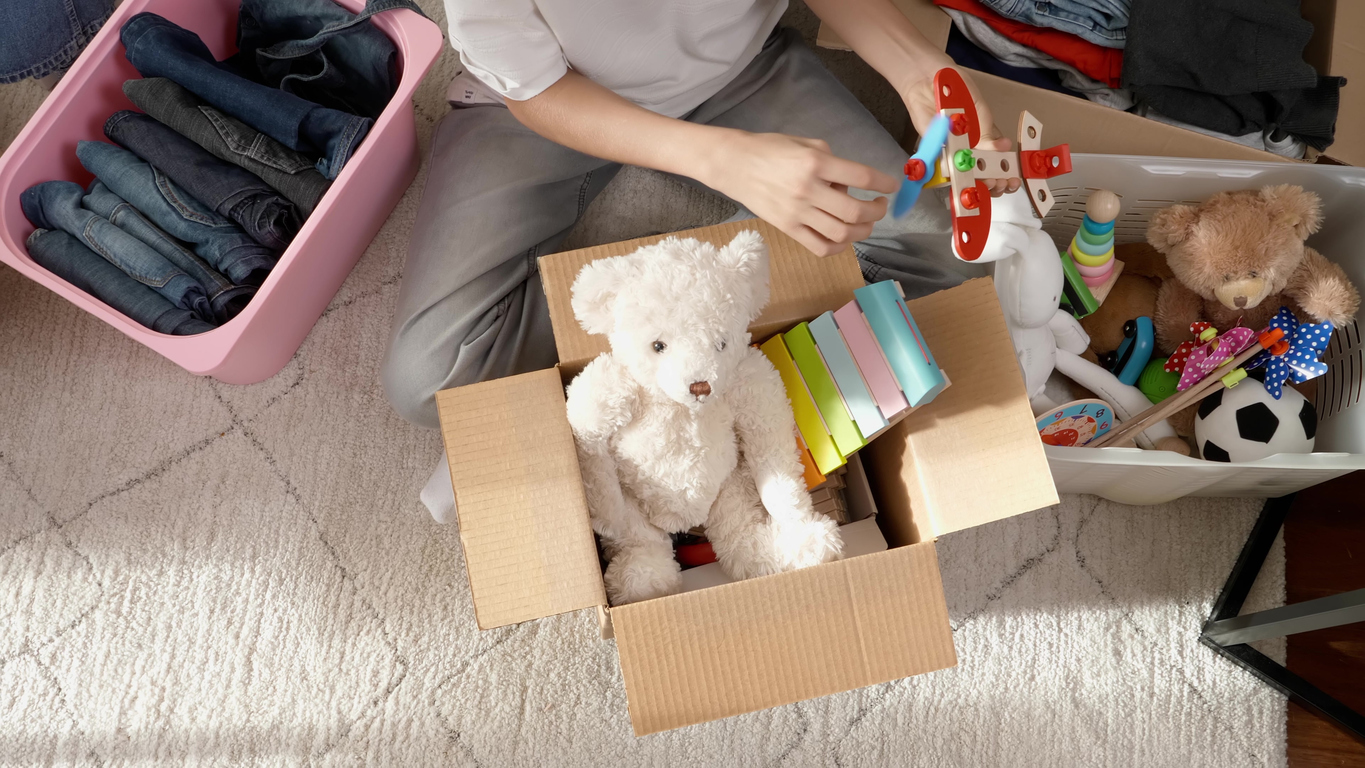
Decluttering your space is not just about getting rid of physical items; it’s also about creating a sense of calmness so you can think clearly. A tidy and organized home can lead to increased productivity, reduced stress, and a happier life overall. In this guide, I’ll share some of the greatest tips on decluttering to help you achieve a more organized and peaceful living space.
Below are the 9 tips on decluttering:
1. Start Small
One of the biggest mistakes people make when decluttering is trying to tackle everything at once. This can quickly turn the project into one that’s overwhelming and lead to burnout. Instead, start small by focusing on one small area at a time. Whether it’s a drawer, a shelf, or a closet, breaking the task down into manageable steps makes it easier to consider tackling.
2. Short Periods of Time
Once you decide where you will begin decluttering and which step you are going to take, set your timer for 10 minutes. Working for short periods of time makes the thought of tackling the project easier to dive into.
3. Declutter by Category
If you don’t know where to begin, consider decluttering by category. Instead of picking a room to declutter, select a category of things like clothes. Then, refine the broad category of clothes into something smaller – like shirts. The next step is to find all your shirts and bring them to one place to go through. This approach allows you to see exactly how much you have in each category and makes it easier to decide what to keep, donate, recycle, or discard.
4. Use the “Five-Box Method”
The five-box method is a simple yet effective strategy to help you make decisions when decluttering. Label five boxes or bins as “Keep,” “Donate/Sell,” “Recycle/Trash,” “Pending”, and “Relocate.” As you review each item, place it in the appropriate box. This method helps to keep the decluttering process moving forward.
For example, if you are decluttering the bathroom cabinet under the sink as you remove each item from the space place it in the appropriate box. Wipe out the cabinet once it is empty and only put back the items in the “Keep” box.
The “Pending” box is for things you are unable to decide about and need more time.
5. Embrace the One-In-One-Out Rule
To prevent clutter from building up again, adopt the one-in-one-out rule. Before you bring something new into your home, whether it’s clothing, kitchen gadgets, or books, think about what the new item is replacing and where you will keep it.
This is one of the hardest tips on decluttering to follow.
When you are out shopping do your best to think about what you already have before buying another item.
If you decide to go ahead and purchase something new, remove the item it is replacing from the drawer, cupboard, or closet and schedule time to donate, trash, or recycle it when you get home.
6. Be Mindful of Sentimental Items
It’s natural to attach sentimental value to certain possessions, making them challenging to part with. However, holding onto too many sentimental items contributes to clutter. Instead of keeping everything, select a few meaningful items to cherish and let go of the rest.
Consider taking photos of sentimental objects to preserve memories without taking up physical space. You can also write down the story of the sentimental object in a journal and attach the photo.
7. Create Functional Storage Solutions
Invest in storage solutions that are both functional and aesthetically pleasing. Use bins, baskets, shelves, and drawer organizers to keep items neatly organized and easily accessible. Designate specific areas for different categories of items to avoid clutter from spreading throughout your home.
8. Establish Daily and Weekly Habits
Maintaining an organized and relatively clutter-free space requires consistent effort. Work to develop daily habits like making your bed, wiping down the kitchen counter after meals, and tidying the family room before bed.
Assign heavier tasks like vacuuming, cleaning the bathroom, or changing your sheets to specific days of the week to avoid feeling overwhelmed by housework. There’s no need to do every household chore in just one day unless that’s the system that works best for you. Spread the chores out over a week, so you have more time for relaxation and fun on the weekends.
9. Monitor Your Progress
Track your decluttering progress to stay motivated and focused. Take before and after photos of areas as you work to declutter a space. You will see the progress more clearly when looking at it in a photograph. Use a checklist to keep track of your daily and weekly chores. Remember to reward yourself with a small treat as you reach each milestone.
Conclusion
Decluttering is a transformative process that goes beyond creating a tidy space—it’s about reclaiming control, reducing stress, and enhancing your overall well-being. By implementing these top tips on decluttering, you can create a more organized, peaceful, and joyful home in which to thrive.
Send me an email to schedule a free 30-minute phone consultation. We’ll review ways in which you can begin to declutter your home and become more organized.
My email is: dnqsolutions@gmail.com
Diane N. Quintana is an ICD Master Trainer, Certified Professional Organizer in Chronic Disorganization, Certified Professional Organizer, owner of DNQ Solutions, LLC and co-owner of Release Repurpose Reorganize LLC based in Atlanta, Georgia. She specializes in residential and home-office organizing and in working with people challenged by ADHD, Hoarding and chronic disorganization.


I LOVE your 5-box concept and always employ something similar when helping clients or my family. All of these tips are so great, and I think would be useful for anyone who is interested in trying to declutter their own home. Thank you!
My home is pretty saturated with stuff. Once a month I reevaluate one zone of my house to see what can go. But sometimes items come in unexpectedly and I have to get rid of some items so that I can make a place to store the new items that I want or need.
What an excellent overview!
Functional storage is key, and can often replace fiddly organizational tools that end up causing friction. For example, if you wear makeup every day but just know you won’t be bothered with putting it all away once your face is made up, you can take a flat-bottomed tray-style basket, lay a small hand towel (with edges folded under to make it fit, if necessary) and lay out your brushes and makeup, and even your makeup case for when you DO put things away, on the tray as if it were a surgeon’s instrument tray. You may never keep it super-organized, but now you can quickly lift the whole thing up with one hand and wipe the counter rather than loose powder and goop getting all over.
I’m intrigued by your “Pending” box. How long do you find that clients who can’t make a decision that day need to make it? (We usually put true “can’t decide” items back; where does that box go while they’re waiting?
Thanks, Julie. I love your method for corralling makeup! Keeping things simple is the best way to keep them user-friendly. The pending box only works if you implement a set time frame to go back and revisit the items in the box with the understanding that a decision will be made.
All of these are so good, and we are on the same page with “habits” this week.
I used to have a similar, “5 box” concept based on the red boxes at the bottom of my logo: R= return to the location, E=Elsewhere, D= Dispose (trash, recycle, compost, etc), D= Donate, S=Sell. I didn’t have one for pending, but that can really help you keep move forward if you find you are getting stuck on an item.
Here’s to decluttering success!
Yes! Habits are so important!
I agree that 15 minutes is all you need to start your journey to a decluttered life. Taking a few minutes to declutter one small area will propel one into the excitement of decluttering and motivate them to continue the process. The trick is to make the task easy and not one that will take you over 15 minutes.
Thank you! It’s important to understand when you keep the tasks short and sweet, they are easy to do which makes continuing the work easier to swallow.